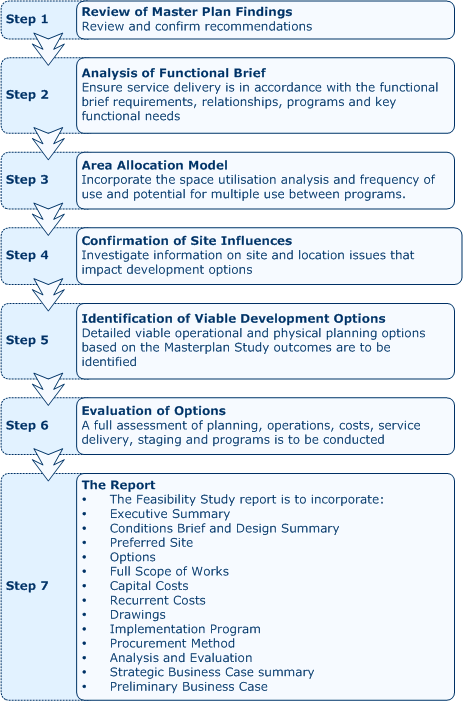

Project Practical is a management and career blog that was created by business professionals. Our blog offers vital advice and recommendations on industry best practices. I hope that this article has been eye-opening and will improve your chances of success for the next project you undertake.

Many people like to invest into projects because they have a gut instinct telling them to do so. The benefit cost ratio can provide the validation required to pursue that gut instinct. Although you must look at your costs and benefits in an objective manner to calculate the ratio, those figures can also be manipulated to serve someone’s personal purpose. To calculate the BCR, you must divide the total discount value of the expected benefits by the total discounted value of the costs involved. To calculate these values, you would take the net present value formula, where the discount rate is raised to the number of periods involved.
How Do You Calculate the Benefit-Cost-Ratio?
Please stick to the end of the article to learn how BCR can be a game-changer for your business when undertaking projects and how it enables you to save on the project’s costs and maximize the benefits. If you compare investment alternatives, assess different project options or prepare for your PMP exam, you will want to understand the meaning and calculation of the cost-to-benefit ratio. Read on to learn the definition of the BCR and how it is calculated. Poor cash flow forecasting or an incorrect discount rate would lead to a flawed ratio. As an example, assume company ABC wishes to assess the profitability of a project that involves renovating an apartment building over the next year.
- As the BCR compares discounted benefits with discounted costs, it offers a good indication of how big a ‘buffer’ between benefits and costs is.
- Knowledge about benefit-cost ratios plays directly into the Business Environment domain in the PMP Exam Content Outline, making it fair game for some questions on the PMP Exam.
- Direct costs include expenses directly billed to the project, such as the cost of materials or labor.
- A benefit-cost ratio allows you to know whether your strategic plan towards the project is viable or not.
- Monthly Earnings means your gross monthly income from your Employer, not including shift differential, in effect just prior to your date of disability.
- However, it comes with some limitations and should therefore be used alongside other tools and processes.
If the difference is positive, the project is profitable; otherwise, it is not. To get a higher temp difference between inlet and outlet temperature more energy is required, which is saved. So, a higher amount of fuel and money is saved, giving rise to more cash flow, and hence B/C increases. Monthly Earnings means your gross monthly income from your Employer, not including shift differential, in effect just prior to your date of disability. It is prior to any deductions made for pre-tax contributions to a qualified deferred compensation plan, Section 125 plan or flexible spending account. It does not include income received from commissions, bonuses, overtime pay or any other extra compensation or income received from sources other than your Employer.
Even so, employee cost per hour should be factored into the equation. Knowing this can help organizations determine how much they will need to invest in a project and how long it will take for that investment to pay off. However, if the project was for a business and the expected benefits are in monetary value , having a strategic plan that discusses the BCR is paramount. The present value of benefits of a series of cash flows equals the likewise discounted costs. This situation is obviously more preferable than options with a BCR lower than 1.
Annual Earnings means your gross annual income from your Employer in effect just prior to the date of loss. It is prior to any deductions made for pre-tax contributions to a qualified deferred compensation plan, Section 125 plan, or flexible spending account. It does not include income received from commissions, bonuses, overtime pay, any other extra compensation or income received from sources other than your Employer. A business looks to invest $100,000 in a new product that it projects will yield $500,000 in revenues, based on today’s monetary values.
The difference is that for this figure, the outflows are considered as representing costs, rather than the inflows. Although the benefit-cost ratio is a simple tool to gauge the attractiveness of a project or asset, it should not be the sole determinant of a project’s feasibility. The internal rate of return is a metric used in capital budgeting to estimate the return of potential investments. The information featured in this article is based on our best estimates of pricing, package details, contract stipulations, and service available at the time of writing. Pricing will vary based on various factors, including, but not limited to, the customer’s location, package chosen, added features and equipment, the purchaser’s credit score, etc. For the most accurate information, please ask your customer service representative.
The BCR Formula
However, due to limited resources, choosing to pursue one project usually means giving up other potentially viable alternatives. Although benefit-cost ratios can be helpful, they also simplify projects down to a single number. As you have most likely experienced, projects are usually much more complicated! Here are some limitations you should keep in mind when using BCRs. The ratio is 2.0, which is greater than 1.0, so the benefits outweigh the costs.

Since Project 3 has the highest BCR, it will likely earn the highest profit, so it seems like the best choice. However, benefit-cost ratios also have some limitations and should not be the sole basis of your decision. Cost-benefit analysis is a systemic approach to evaluating and comparing the costs and benefits of different project proposals.
Benefit Cost Ratio
A benefit-cost ratio is an indicator showing the relationship between the relative costs and benefits of a proposed project, expressed in monetary or qualitative terms. The BCR is calculated by dividing the proposed total cash benefit of a project by the proposed total cash cost of the project. The benefit cost ratio (or benefit-to-cost ratio) compares the present value of all benefits with that of the cost and investments of a project or investment. These benefits and costs are treated as monetary cash flows or their equivalents, e.g. for non-monetary benefits or company-internal costs.
How to Calculate the Benefit to Cost Ratio
However, if it takes 4 hours to set up the equipment, the employees won’t be working for those 4 hours, which means that time will be lost, standing in the way of money that you could have generated. Therefore, ensure that you conduct comprehensive calculations and attach the figures to the list you have. The BCR is typically used for cost benefit analyses, along with other measures such as the net present value, return on investment, internal rate of return, etc. The consideration of absolute amounts of cost and benefits sets this ratio apart from many other indicators. The present value of the benefits in a series of cash flows is lower than the present value of the corresponding costs. The lower the BCR, the higher the excess of discounted costs compared to the discounted benefits.
What Is A Benefit-Cost Ratio – BCR?
Timothy has helped provide CEOs and CFOs with deep-dive analytics, providing beautiful stories behind the numbers, graphs, and financial models. The company wants to achieve a rate of return of 20% on the invested capital. For particularly large projects, assumptions and uncertainties are not easy to quantify and this causes the cost-benefit analysis harder to get right.
That process further lessens the risk of the BCR being inaccurate. In the absence of funding constraints, the best value for money projects are those with the highest net present value . Where there is a budget constraint, the ratio of NPV to the expenditure falling within the constraint should be used. In practice, the ratio of present value of future net benefits to expenditure is expressed as a BCR.
Next, assign and calculate monetary values for the costs and benefits. This step can be tricky for many reasons, including the fact that monetary values change over time. You need to consider inflation when calculating a project’s benefit-cost ratio, which means you need to understand the concept of Present Value . Think of the benefit cost ratio as an “educated guess.” If you’ve calculated your costs and benefits accurately, then you’ll have a good idea of what the expected outcome should look like.
Poor cash flow forecasting or an incorrect discount rate would lead to a flawed benefit-cost ratio. If the BCR is equal to 1.0, the ratio indicates that the NPV of expected profits equals the costs. If a project’s BCR is less than 1.0, the project’s costs outweigh the benefits, and it should not be considered. Benefit-cost ratios are most often used in capital budgeting to analyze the overall value for money of undertaking a new project.
Variation of benefit/cost ratio with respect to water inlet temperature for both the systems. Variation of benefit/cost ratio with respect to electricity price. Variation of benefit/cost ratio with respect to number of days of usage per year for both the systems. 2.This analysis assumes that the cost of Motor A does not increase in 5 years.
Adam Hayes, Ph.D., CFA, is a financial writer with 15+ years Wall Street experience as a derivatives trader. Besides his extensive derivative trading expertise, Adam is an expert in economics and behavioral finance. Adam received his master’s in economics from The New School for Social Research and his Ph.D. from the University of Wisconsin-Madison in sociology. He is a CFA charterholder as well as holding FINRA Series 7, 55 & 63 licenses. He currently researches and teaches economic sociology and the social studies of finance at the Hebrew University in Jerusalem. Each machine is expected to have an annual cash inflow of $1,800 for the next 5 years.
Using the BCR alone may not be sufficient for firms to decide whether to go ahead with a project or not and must be used along with other forms of financial analysis so that firms can make better financial decisions. This indicates that the new project is almost breakeven with only $1.08 in benefits for every $1 cost. If the BCR is equal to 1, this means that the cost equals the profits while a BCR of less than 1 is an outcome that should not be considered for the cost outweighs the profits. Before these two are divided, their present values need to be computed first while also considering the terminal values including salvage or remediation costs. The Benefit-Cost Ratio is widely used in Capital Budgeting that helps the business to identify, evaluate and select the right capital investment for taking on a new project based on the firm’s current situation. Simply following a rule that success means above one and failure or reject decision would mean BCR below one can be misleading and lead to a misfit with the project in which heavy investment is made.
The benefit cost ratio is a common indicator of the profitability of a potential investment or project. While it does not cover all aspects of a cost benefit analysis, it indicates whether an option is beneficial. As the BCR compares discounted benefits with discounted costs, it offers a good indication of how big a ‘buffer’ between benefits and costs is. If a project has a BCR that is greater than 1.0, the project is expected to deliver a positive net present value and will have an internal rate of return above the discount rate used in the DCF calculations.
As mentioned before, BCR helps you to plan your finances and ensure that you get the most benefit from your project. Therefore, we recommend that you calculate the benefit-cost ratio of your project before commencing. It would be best if you did it in the project’s planning stage to give you the go-ahead. If there were an option with high investments and costs and a small relative benefit cost ratio less than 1 means profit margin, the NPV would present this option in a more favorable way as it discounts the absolute profitability amounts. As the BCR is focusing on the relative profitability, the larger divisor of the BCR would likely push this option behind other options. The discounted after-tax cash flow method values an investment, starting with the amount of money generated.
